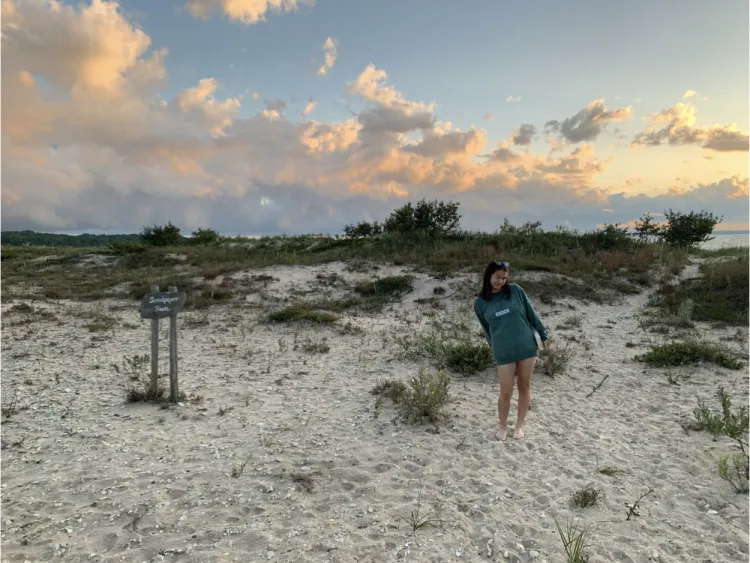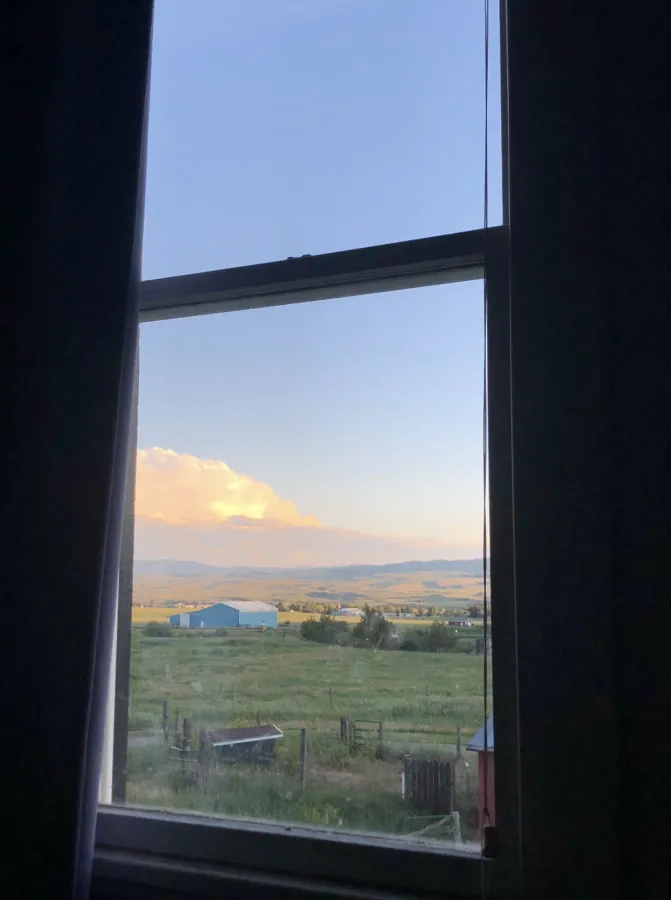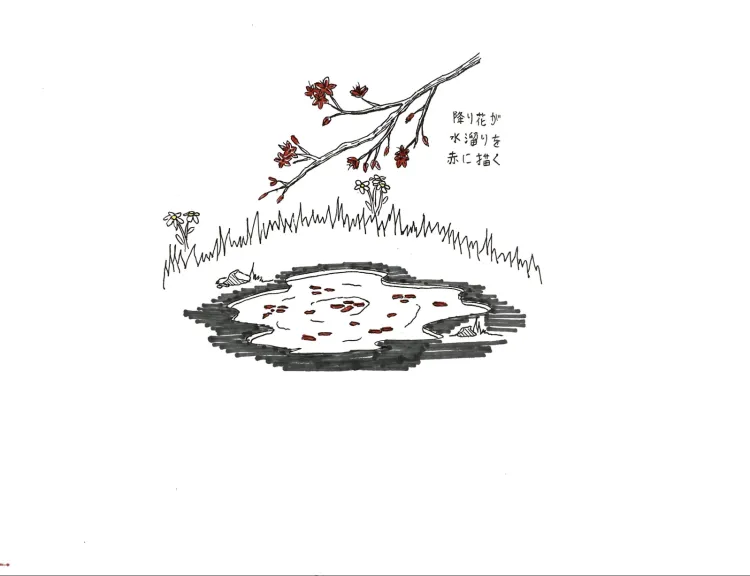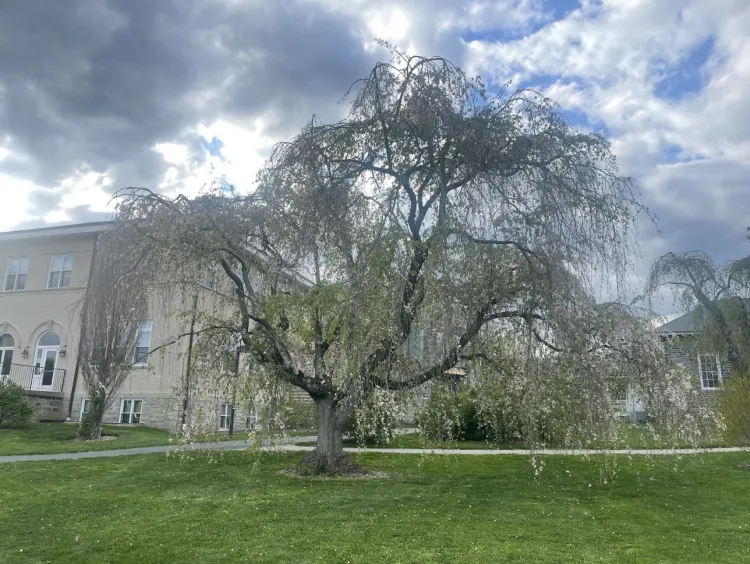JPNS013 Haiku Project
Juna Saito
蒸し暑く 静かな林 ビーバー小島
Off the coast of Charlevoix in the middle of Lake Michigan, there is an island called Beaver Island. Many Irish immigrants came and settled here during the 1900’s, and my family are some of their descendents. Every summer, my extended family splits up our time staying in our great great grandfamilies post office and centennial farm house, so for every summer since birth, I have been returning to Beaver Island. With incredibly soft sand dunes, fluffy evergreens, and dark night skies, the nature on this island is special. However hot the summers get, the beaches are lined with thick woods that make them incredibly quiet. Spending a couple of weeks here is all I need to de-stress and center myself each year. For its close connection to both family and nature, I chose to write my haiku about the beauty of this island.

Andy Chen
赤い山 太陽を抱く 残雪や
The 季語 in this haiku is 'lingering snow' and the season is spring. During spring break this year, my friends and I visited Zion National Park in Utah, where we saw deep canyons, steep cliffs, and did a lot of hiking. The scenery was very colourful- the red rocks, white snow, green trees, yellow sun, and blue sky together created a vivid landscape picture. As the lingering snow embraces the sunshine and gradually melts, everything seems to return to being vivid and lively. I was left in awe by the stunning view, and it was unforgettable for the rest of my life.

Amelia Brown
夏のひに・ごうごうしてる・牛の声
This haiku is inspired by this photo taken from inside a house in Clyde Park, Montana. This house was surrounded by fields of cows and I have vivid memories of hearing the calls of the cows in the summer.
Without the stress of school, summer is the time when I am most able to relax. In addition, the imagery of the cows remind the reader of pastoral life, another nod to a relaxing and slow life. However, this haiku has a double meaning. The slow relaxing nature of rural life which is apparent in the first read of the poem, is juxtaposed with a second message about the climate crisis. This message is hidden within the various readings of the word “ひ”, the urgency elicited by the onomatopoeic “ごうごう” (gou-gou) of the cows voice, and the mention of cows in the haiku. Further, the relaxing nature of rural life evokes a sentimental feeling comparable to the feeling of a healthy world that once was.

Robert Lee
降り花が 水溜りを 赤に描く
The literal translation of this haiku is: "falling flowers paint puddles of water red." The seasonal word of this haiku is ‘furibana’, which expresses flower petals that are falling and is related to the autumn season. When I was younger, the pool where I often went to swim was located next to a flowering red tree. When autumn came, rain caused the flowers to fall into the water, making it appear red at a distance. It is a memory that I am very fond of, so I decided to try making it into a haiku. Haiku poems traditionally follow a 5-7-5 syllable pattern, but this one breaks that convention by following a 5-6-5 pattern. One of my favorite haiku artists, Kawahigashi Hekigotou, helped to popularize this trend of 'rule-breaking' to cause dissonance and make readers pause, so I wanted to try incorporating that into my haiku, as well.

Zackary Rackauckas
咲きつつや 枝垂桜が 帰りたい
The weeping cherry tree is a type of cherry tree that blooms on Swarthmore’s campus every spring. But no matter how beautiful the cherry blossoms are, I always feel slightly homesick. Since the weeping cherry blossoms originally came from Tokyo, I think that they feel homesick at times as well, so I tried to express my feelings through the personification of the cherry blossoms in this haiku. The seasonal word (kigo), which must be included in any haiku, is weeping cherry blossoms; the season it takes place is spring.




